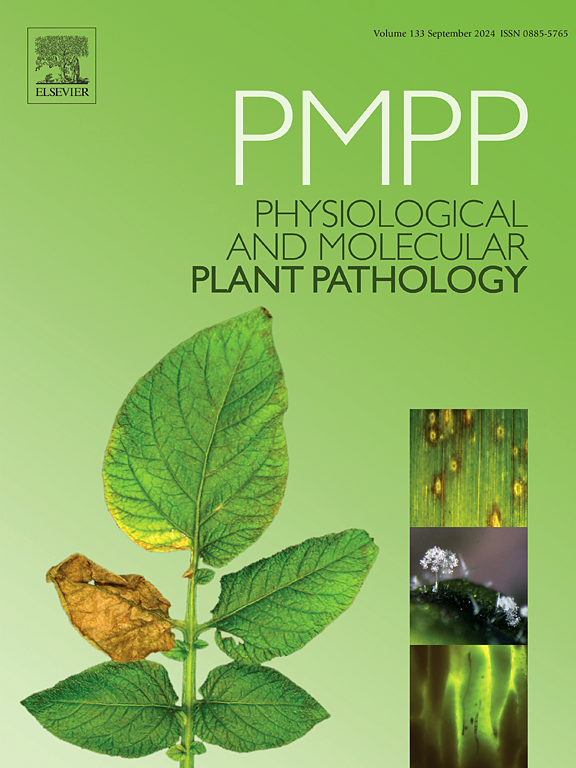Taxonomic studies of powdery mildew fungi infecting almond and walnut in the Northwestern Himalayan region of India
IF 2.8
3区 农林科学
Q2 PLANT SCIENCES
引用次数: 0
Abstract
Powdery mildew is a significant fungal disease that affects the wide range of crops including nut fruits. Given their economic importance, the accurate identification of the causal fungus is essential for devising an effective disease management program. In a recent study, seventy-five powdery mildew samples were collected throughout the Kashmir valley of Jammu and Kashmir, India from two nut fruits crops namely almond (Prunus amygdalus) and walnut (Juglans regia L.). These samples were analyzed to identify the associated fungi. The fungi were first characterized morphologically followed by molecular characterization using the ribosomal DNA internal transcribed spacer (ITS) region. The study identified three species belonging to three different genera within the Erysiphaceae family viz., Podosphaera pannosa on almond, Phyllactinia juglandis under field and Erysiphe juglandis under greenhouse conditions on walnut. Notably, Podosphaera pannosa on almond, Erysiphe juglandis (in greenhouse) and Phyllactinia juglandis (in field conditions) on walnut represent the first reports from Jammu and Kashmir, India. This research highlights the diversity of powdery mildew pathogens affecting nut crops in the region and underscores the importance of accurate disease or pathogen identification for the effective management of the disease.
求助全文
约1分钟内获得全文
求助全文
来源期刊
CiteScore
4.30
自引率
7.40%
发文量
130
审稿时长
38 days
期刊介绍:
Physiological and Molecular Plant Pathology provides an International forum for original research papers, reviews, and commentaries on all aspects of the molecular biology, biochemistry, physiology, histology and cytology, genetics and evolution of plant-microbe interactions.
Papers on all kinds of infective pathogen, including viruses, prokaryotes, fungi, and nematodes, as well as mutualistic organisms such as Rhizobium and mycorrhyzal fungi, are acceptable as long as they have a bearing on the interaction between pathogen and plant.

 求助内容:
求助内容: 应助结果提醒方式:
应助结果提醒方式:


